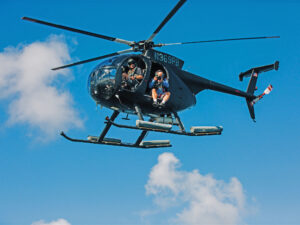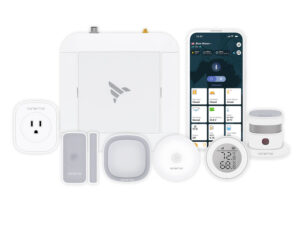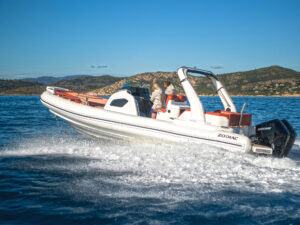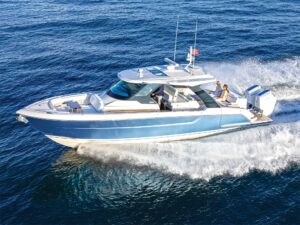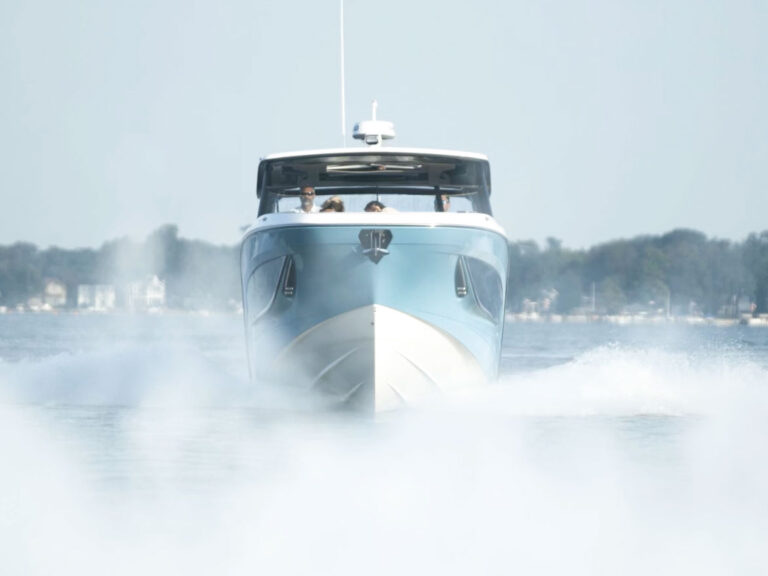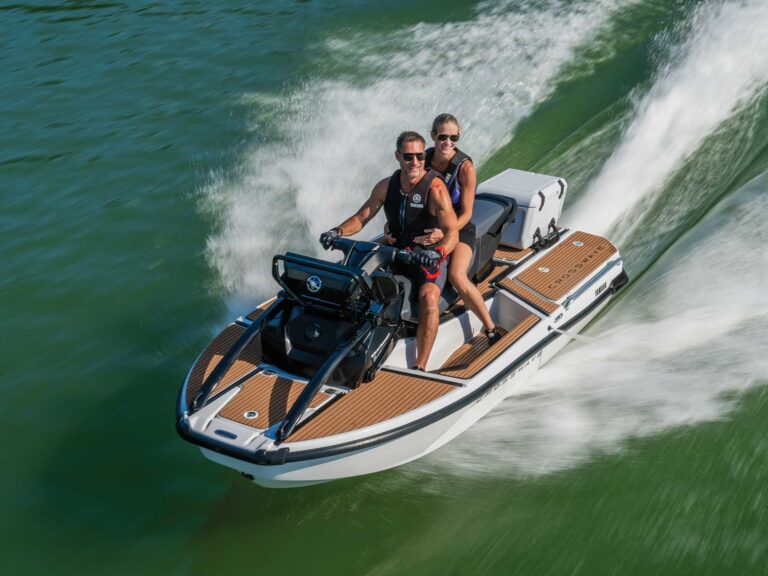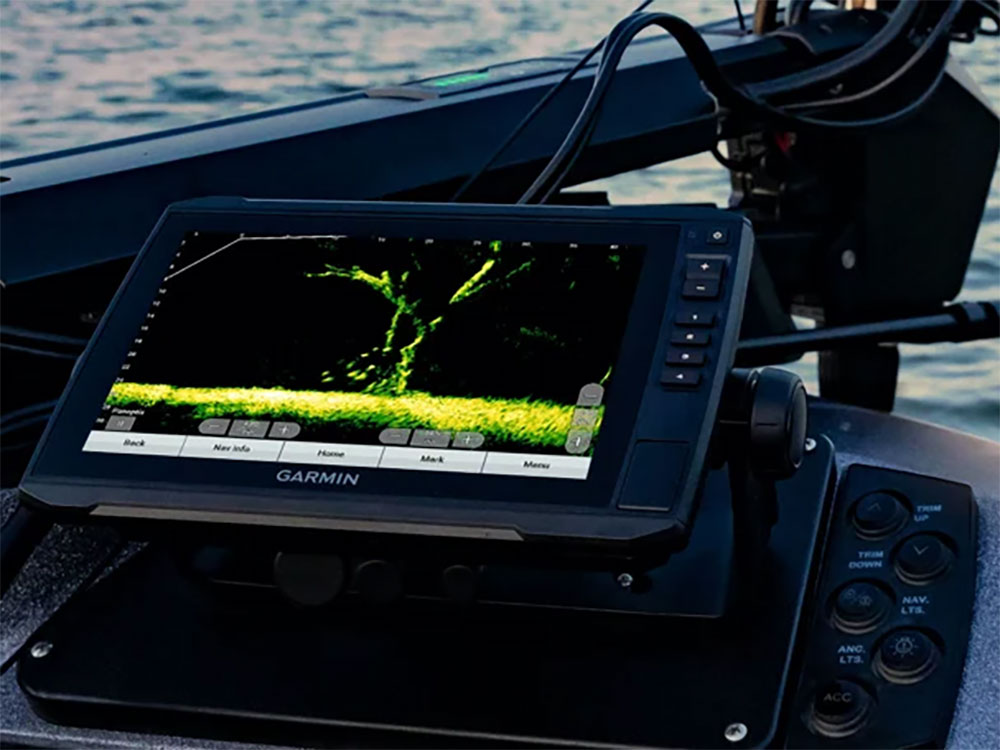
If you haven’t noticed, many anglers hardly look up from the big screen fishfinder anymore while fishing. Live sonar has changed the way we fish. Nowhere is that more true than on the professional angling circuits run by organizations such as B.A.S.S. and Major League Fishing
This video shows the typical view over the bow and over the helm of a bass boat.
The first time I witnessed the true power of live, forward facing sonar in use was in Allicante, Spain, a few years back. I was on a press junket to visit Simrad’s European headquarters. There, I went out on boats with pro anglers and engineering staff to demo the Ultimate Fishing System with Total Boat Control.
I was mesmerized. Here’s the basic drill:
- First, you find and target a specific, individual fish.
- Then, you cast to it and see your lure flutter down near it.
- Then you see the fish react –or not- to your lure.
- You either hook up, or try a different action until you do get a strike.
Not only was I mesmerized, but I knew the jig was up (pardon the pun). Fishing would be changed forever.
Read Next: Bassmaster Restricts Sonar Equipment For Anglers & Major League Fishing Announces Sonar Limits
Fast forward to the present and live sonar is ubiquitous. Recreational adoption of this gear is off the charts. Reactions on the docks and in the tackle shops are mixed. Some say that it’s cheating, and allows angling skills to atrophy, while others embrace the technology as a breakthrough.
On the pro side, B.A.S.S, Major League Fishing, and Professional Fishing League have begun to react. These organizations run big-time, big-money fishing tournaments. All three just stated new rules which will limit or restrict the use of live sonar.
For instance, B.A.S.S. is limiting the number of live sonar transducers to just one and it must be mounted to the trolling motor at the bow of the boat. B.A.S.S. will also provide a list of acceptable live transducers from all major electronics manufacturers. Equipment not on this list is banned from usage in Elite Series and Classic competition. This equipment list will be vetted and updated annually. Secondly, Elite Series and Classic competitors will be limited to a total of 55 inches of screen, including bow and dash head units.
At Major League Fishing all boats, across all MLF circuits, will be limited to two forward-facing or 360-degree sonar transducers in any combination. Additionally, no bow-mounted screen may extend vertically more than 18 inches off the surface of the front deck at its highest point when the boat is on plane, and no screen mounted at the console may extend vertically more than 16 inches off the top of the steering column where it protrudes from the console.
Over Labor Day, the National Professional Fishing League, announced that it will prohibit contestants from using forward-facing sonar (FFS) during its top level bass fishing tournaments in 2025.
The reasoning for these rules are two fold, basically, though I suggest you read the details at the links to each organization’s site for details.
One impetus for the new rules is safety, in that an angler’s visibility may be affected if the screens on the bow or at the helm are too tall or positioned such that they block the captain’s view while underway.
The second reason is the belief that the use of this technology erodes angling skills. Tournament fishing is competitive and higher skill not bigger screens should be rewarded.
I’m someone who’s spent a lifetime fishing based upon an understanding of fish behavior, habitat, migratory and spawning habits and food sources. I know that Spot A will produce when the wind is east, but Spot B is better when the wind is South. I know that in May, my quarry will likely be eating such and such and won’t touch something else. I know that on light days this works and on dark days that works. And I am barely scratching the surface of what it means—or at least has meant until now—to be a dedicated angler. It is an avocation.
If you know you know.
On the other hand, it’s just as true that I have adopted all the technology that came along during the last 60 years. My first fishfinder was a Ray Jefferson flasher. Now, it’s a 12-inch color MFD. I won’t bore you with a current equipment list. The point is, can someone who has always adopted technology to aid in fishing in the past really decry live sonar?
I want to hear from you.
Finally, our West Coast and Electronics Editor, Jim Hendricks is crafting a story about the live sonar controversy. Look for it coming soon.

